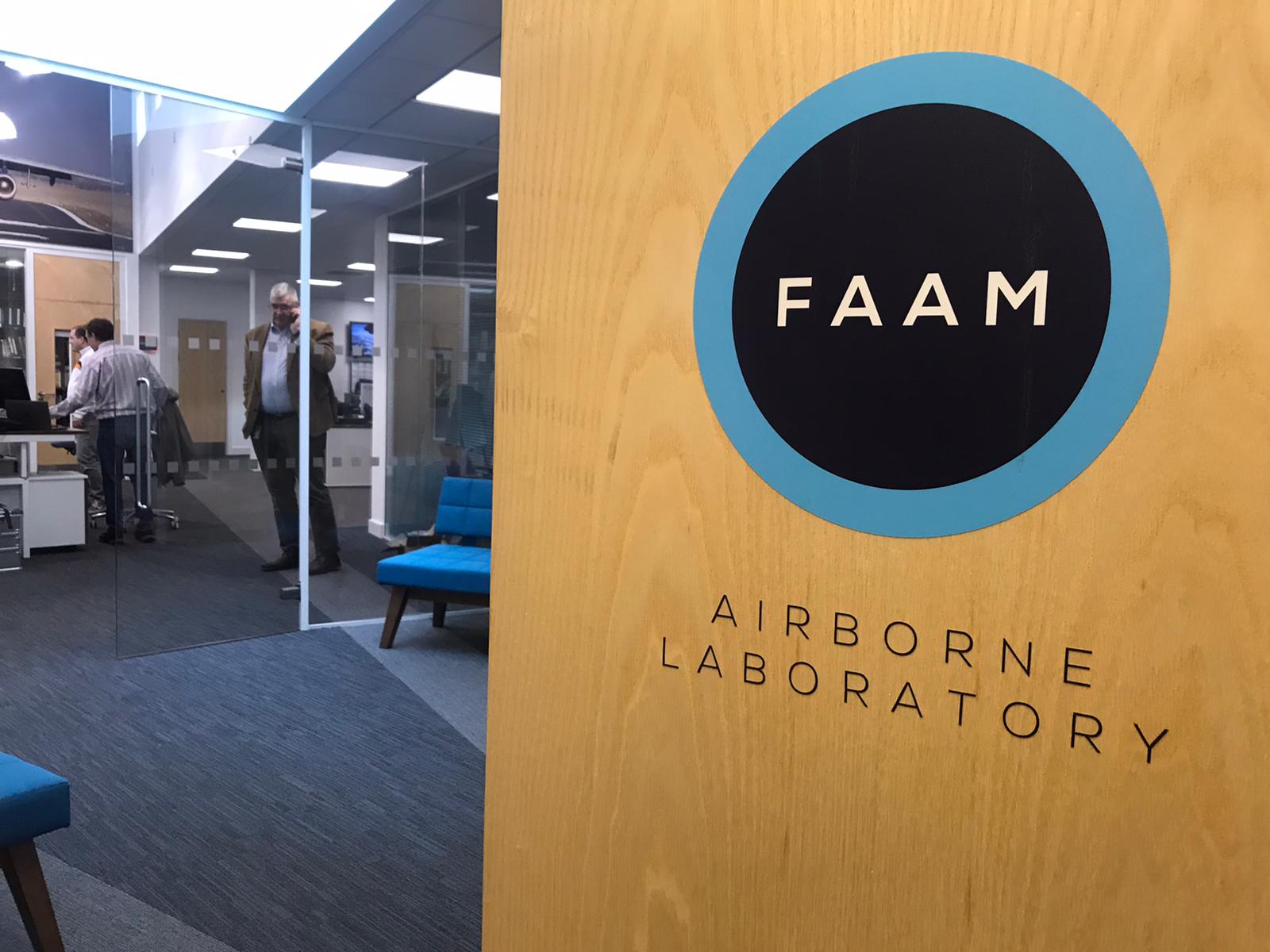Environment MSc students visit the FAAM Plane
30/03/2020

In January, along with some of the students from the Environmental Engineering MSc, we went to Cranfield Airport Hanger 1 to see the FAAM (Facility for Airborne Atmospheric Measurements) plane!
The aircraft is joint owned and run by NERC (Natural Environment Research Council) and the Met Office. FAAM is an independent company based at Cranfield University. Cranfield is the perfect place for this research facility. It is one of the only Universities which has its own airport and is a leader in research fields such as environment and aerospace.

We met with Alan Woolley, Head of FAAM, who explained all about the benefits of the FAAM plane and the important research that it records. We had the opportunity to board the plane which was amazing! The plane was the same size as a passenger plane but instead of rows upon rows of seats, there was testing equipment and computers along both sides of the plane. Surprisingly though, it still had the iconic plane smell: the source of which I still can’t put my finger on!
Alan told us all about the different flights that the plane goes on and the different places he has been able to visit as well as the sort of work he does on location. The main function of the FAAM plane is to look at clouds, specifically at raindrops. The aircraft measures temperature, humidity, and air pressure, collecting samples during flight to measure and make comparisons with other reported data from other sources. During the tour, the students were given the chance to ask Alan questions about the data that is collected and how Alan got into his field of work.

It was really inspiring to see how the content of the modules the students are learning in their lectures can be applied in the industry. It was fascinating to learn and see the amazing impact that this research facility is having on being able to research more about the atmosphere the how the information goes on to help inform the Met Office and improves weather forecasts.
Categories & Tags:
Leave a comment on this post:
You might also like…
Keren Tuv: My Cranfield experience studying Renewable Energy
Hello, my name is Keren, I am from London, UK, and I am studying Renewable Energy MSc. My journey to discovering Cranfield University began when I first decided to return to academia to pursue ...
3D Metal Manufacturing in space: A look into the future
David Rico Sierra, Research Fellow in Additive Manufacturing, was recently involved in an exciting project to manufacture parts using 3D printers in space. Here he reflects on his time working with Airbus in Toulouse… ...
A Legacy of Courage: From India to Britain, Three Generations Find Their Home
My story begins with my grandfather, who plucked up the courage to travel aboard at the age of 22 and start a new life in the UK. I don’t think he would have thought that ...
Cranfield to JLR: mastering mechatronics for a dream career
My name is Jerin Tom, and in 2023 I graduated from Cranfield with an MSc in Automotive Mechatronics. Originally from India, I've always been fascinated by the world of automobiles. Why Cranfield and the ...
Bringing the vision of advanced air mobility closer to reality
Experts at Cranfield University led by Professor Antonios Tsourdos, Head of the Autonomous and Cyber-Physical Systems Centre, are part of the Air Mobility Ecosystem Consortium (AMEC), which aims to demonstrate the commercial and operational ...
Using grey literature in your research: A short guide
As you research and write your thesis, you might come across, or be looking for, ‘grey literature’. This is quite simply material that is either unpublished, or published but not in a commercial form. Types ...






